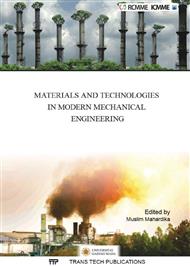p.186
p.191
p.200
p.208
p.217
p.228
p.233
p.241
p.246
Estimation of Acoustic Energy and Performance Characterization of Acoustic Concentrator
Abstract:
Among many methods of particle concentration in liquid, acoustic concentrator uses ultrasonic standing wave to concentrate microparticles in liquid. In order to determine its performance on particle concentration, estimation of acoustic energy density inside the concentrator is important since energy density is the main contributing factor in calculating the primary acoustic radiation force acting on the particles. The balance between the primary radiation force and hydrodynamic force acting on the particles inside the acoustic concentrator determine the performance of the acoustic concentrator. Therefore, this study focuses on the measurement of acoustic energy density inside the h-shaped acoustic concentrator and characterization of performance of the concentrator. First, energy density is estimated by curve-fitting the experimental particle position in the ultrasonic field with one-dimensional theoretical position. Second, two-dimensional acoustic and hydrodynamic fields are determined using two-dimensional simulation model in COMSOL Multiphysics. Integrating the governing equation for particle motion in the balance of acoustic and hydrodynamic forces result in the particle trajectory and it is compared with the experimental observation. The results would provide deeper insight into the operation of acoustic concentrator and the detailed phenomenon of particle motions inside the concentrator.
Info:
Periodical:
Pages:
217-227
Citation:
Online since:
June 2016
Authors:
Price:
Сopyright:
© 2016 Trans Tech Publications Ltd. All Rights Reserved
Share:
Citation:


